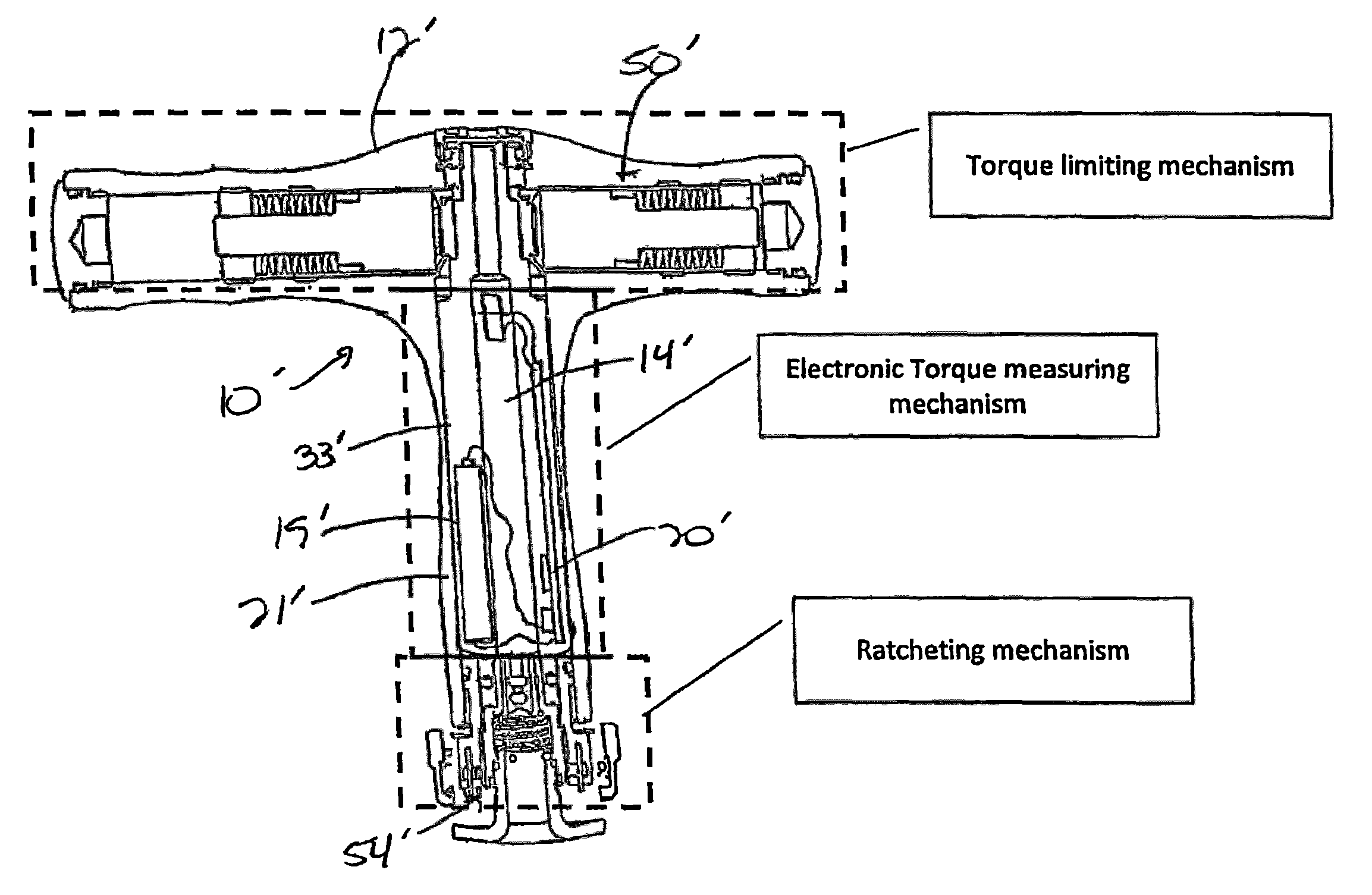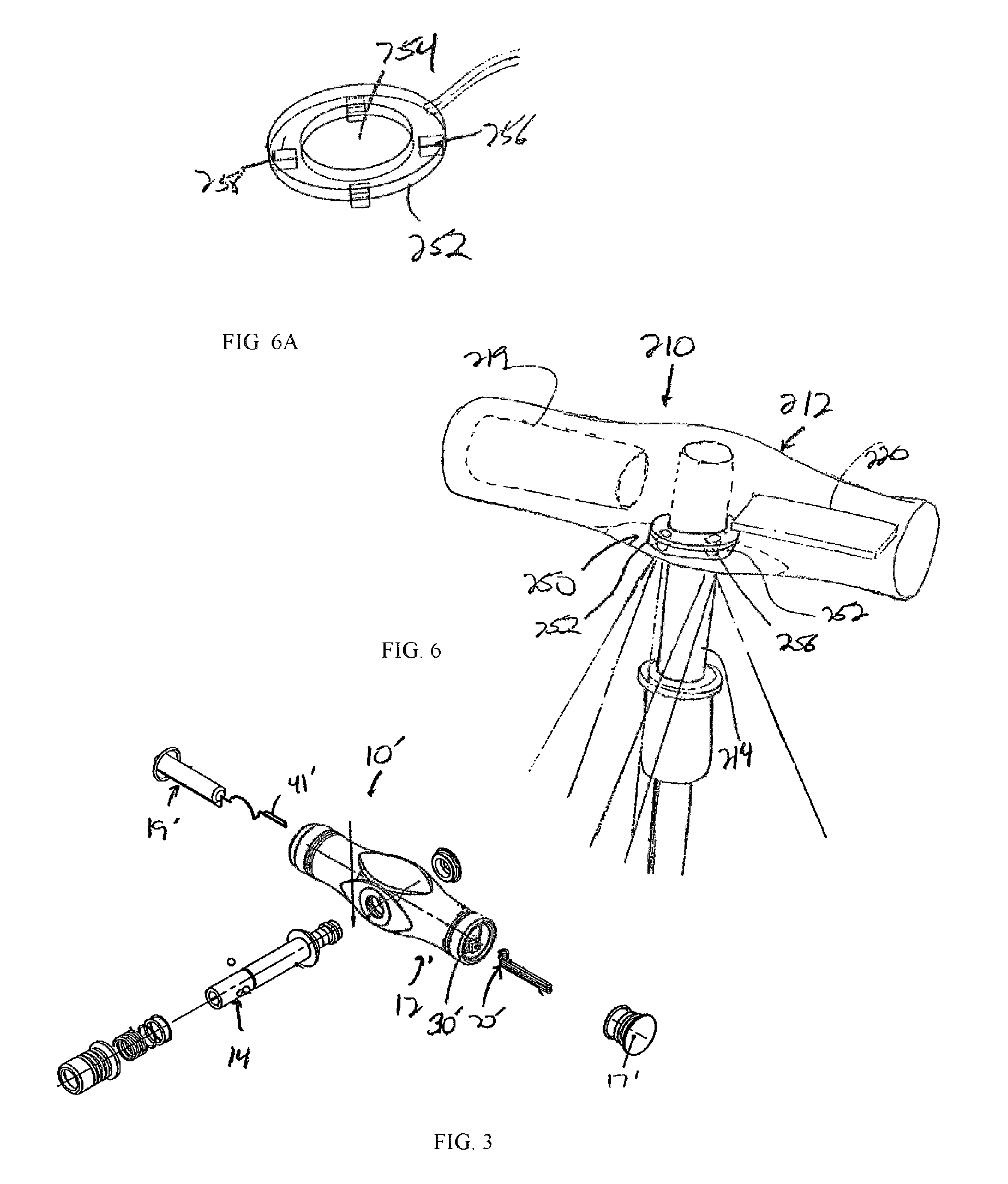Electronic torque wrench
a torque wrench and electric technology, applied in the field of tools, can solve the problems of increased torque, click noise, pretension of the fastener,
- Summary
- Abstract
- Description
- Claims
- Application Information
AI Technical Summary
Benefits of technology
Problems solved by technology
Method used
Image
Examples
second embodiment
[0061]Referring now to FIGS. 3 and 4, the wrench 10′ is illustrated. In this embodiment, the wrench 10′ has a T-shape, with the shaft 14′ extending perpendicularly from the body 12′ in which is disposed a housing 18′, and over which is located a handle 16′. In the illustrated embodiment, the shaft 14′ is disposed centrally on the body 12′ and extends perpendicularly from the body 12′ with the end 26′ and adapter 28′ spaced therefrom, such that the power source 19′ and the electronics unit 20′ are disposed on opposite sides of the body 12′ and connected to one another by connectors 41′, while still contained within the barrier 33′. Alternatively, the shaft 14′ can be oriented to one side or the other of the body 12′, as desired.
[0062]The shaft 14′ can be connected directly to the body 12′ or to a ratcheting mechanism (not shown) disposed within the body 12′. At the connection of the shaft 14′ to the body 12′, a sensor 30′ is disposed to determine the strain or torque being applied by...
third embodiment
[0063]Referring now to FIG. 5, the wrench 110 is illustrated. The wrench 110 has a T-shape similar to the embodiment of FIGS. 3 and 4, but includes a piezoelectric sensor 130 within the handle 116. The sensor 130 is formed of a first element 132 on a flat surface 133 of the shaft 114 and a second element 134 is disposed on an adjacent flat surface 135 of the body 112. The relative position of the elements 132 and 134 is determined by the electronics unit 120 disposed in the barrier 133, which is connected to the elements 132 and 134 by conductors 136, 141 to receive signals from the elements 132 and 134 for use in operating the display 122.
[0064]Looking now at FIGS. 6 and 6A, a driving tool or wrench 210 is shown similar to that in FIGS. 3-5, in which the wrench 210 additionally includes a light source 250. The light source 250 is formed with a generally circular housing 252 that has a central aperture 254 that is slightly larger in shape than the shaft 214, such that the housing 25...
fourth embodiment
[0067]Looking now at FIG. 9, the wrench 510 is illustrated. In the wrench 510, the body 512, in addition to the ratcheting mechanism 515 and other components of the prior embodiments 10 and 10′, has a mechanical torque level measuring and / or indication mechanism 570, such as that disclosed in U.S. Pat. No. 7,806,026, incorporated herein by reference in its entirety. The pop-out indication mechanism 570 operates in conjunction with the display 522 to illustrate the particular torque level at which the wrench 510 is being operated.
PUM
 Login to View More
Login to View More Abstract
Description
Claims
Application Information
 Login to View More
Login to View More - R&D
- Intellectual Property
- Life Sciences
- Materials
- Tech Scout
- Unparalleled Data Quality
- Higher Quality Content
- 60% Fewer Hallucinations
Browse by: Latest US Patents, China's latest patents, Technical Efficacy Thesaurus, Application Domain, Technology Topic, Popular Technical Reports.
© 2025 PatSnap. All rights reserved.Legal|Privacy policy|Modern Slavery Act Transparency Statement|Sitemap|About US| Contact US: help@patsnap.com



